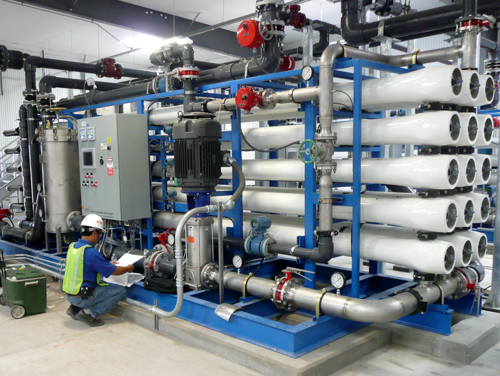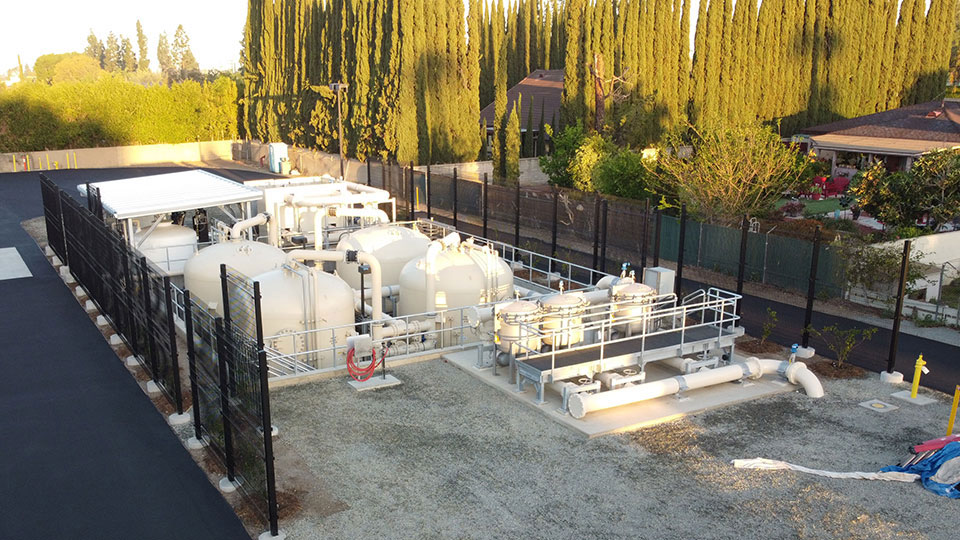PFAS Waste Management in Industrial Operations to Minimize Environmental Harm
PFAS Waste Management in Industrial Operations to Minimize Environmental Harm
Blog Article
Ingenious PFAS Treatment Solutions for Safer Water
The raising frequency of PFAS contamination in water supplies necessitates an essential assessment of ingenious treatment remedies. Advanced purification technologies and unique chemical therapies existing promising methods for lowering these persistent contaminants. In addition, emerging bioremediation methods offer a more lasting method to taking on PFAS obstacles. As regulatory structures remain to adjust, comprehending the performance and scalability of these solutions becomes paramount. What implications do these advancements hold for public health and environmental reconstruction, and just how can stakeholders successfully apply them in varied contexts?
Introduction of PFAS Contamination
PFAS contamination has become a substantial environmental and public health worry. Per- and polyfluoroalkyl substances (PFAS) are a team of synthetic chemicals understood for their perseverance in the atmosphere and human body, leading them to be frequently described as "permanently chemicals." These substances have been extensively used in various markets, including firefighting foams, water-repellent materials, and food product packaging, largely because of their water- and grease-resistant properties.
The widespread use PFAS has resulted in their detection in soil, water supplies, and also in the blood of human beings and pets. Researches have connected PFAS direct exposure to many health issues, consisting of developmental results in babies, immune system disorder, and different types of cancer. Additionally, the ecological perseverance of these compounds complicates their destruction and removal, elevating problems regarding lasting ecological influences.
Regulatory bodies are progressively implementing rigid guidelines to keep track of and decrease PFAS degrees in drinking water and other ecological tools. As recognition of PFAS contamination expands, it has come to be critical for neighborhoods and industries to look for efficient therapy remedies to alleviate exposure and guard public health and wellness.
Advanced Filtering Technologies
As the necessity to resolve PFAS contamination increases, advanced filtration modern technologies have actually become a critical element in the remediation initiatives targeted at removing these consistent chemicals from water resources. These innovations take advantage of advanced systems to successfully target and capture PFAS compounds, which are notoriously resistant to standard treatment methods.
One of one of the most promising techniques is the usage of granular triggered carbon (GAC), which adsorbs PFAS particles because of its high area and permeable framework. This method has been commonly carried out in both community and industrial setups, showing substantial reductions in PFAS concentrations. Additionally, ion exchange resins have actually acquired traction, specifically made to uniquely bind PFAS ions from water, hence facilitating their elimination.
Membrane purification modern technologies, such as reverse osmosis and nanofiltration, additionally reveal effectiveness in PFAS removal by physically dividing contaminants from water - pfas management. These systems can attain high degrees of purity, making them ideal for alcohol consumption water applications
Chemical Therapy Innovations
Countless chemical treatment technologies are being explored to properly attend to PFAS contamination in water products. One appealing strategy involves using advanced oxidation processes (AOPs), which use powerful oxidants such as ozone, hydrogen peroxide, or chlorine dioxide integrated with UV light to break down PFAS substances right into much less hazardous compounds. This method has shown effectiveness in lab settings, revealing prospective for scalability in real-world applications.
One more cutting-edge method is the growth of ion-exchange resins specifically created to target PFAS. These resins can selectively adsorb PFAS compounds from water, permitting their elimination throughout treatment processes. Current innovations have boosted the performance and capability of these resins, making them a favorable choice for water treatment centers.
Additionally, scientists are exploring making use of chemical representatives like persulfate and ferrous ions to enhance the degradation of PFAS in contaminated water. These representatives can induce chain reaction that promote the breakdown of relentless PFAS substances.
Arising Bioremediation Methods
Current developments in chemical treatment technologies have led the way for discovering bioremediation methods as a sensible choice for dealing with PFAS contamination. Bioremediation utilizes the natural metabolic procedures of microorganisms to deteriorate or transform toxins, making it an appealing strategy for tackling consistent pollutants like PFAS.
Arising techniques in bioremediation include making use of genetically crafted more tips here microbes that can especially target and damage down PFAS compounds. These microbial pressures are being established for their improved degradation capacities, increasing the performance of the remediation process. Additionally, researchers are exploring the capacity of plant-assisted bioremediation, where certain plant varieties might uptake and withdraw PFAS from contaminated soil and water.
One more encouraging approach is the application of bioaugmentation, which involves introducing helpful microbes right into polluted atmospheres to increase the destruction of PFAS. This method can assist in faster removal timelines and improve general performance.

Regulative Structures and Requirements
A detailed governing framework is vital for effectively managing PFAS contamination and making certain public health and wellness security. The raising recognition of per- and polyfluoroalkyl substances (PFAS) as toxic wastes has actually motivated numerous federal and state agencies to establish requirements that govern their visibility in water products. The U.S. Epa (EPA) has established wellness advisories and is pursuing setting enforceable limitations for PFAS in alcohol consumption water.
State-level regulations differ considerably, with some states adopting more stringent standards than those recommended by the EPA. These laws frequently consist of maximum pollutant levels (MCLs) for details PFAS compounds, tracking requirements, see page and reporting obligations for water utilities. In addition, arising structures concentrate on the remediation of contaminated sites, highlighting the requirement for reliable therapy technologies.

Verdict
To conclude, the development and application of innovative read what he said PFAS treatment options are important for addressing the pervasive problem of water contamination. Advanced filtration modern technologies, chemical treatments, and emerging bioremediation strategies collectively offer a diverse strategy to successfully lower and break down PFAS levels. As governing frameworks proceed to progress, integrating these technologies will be vital to secure public wellness and restore the integrity of contaminated water resources, inevitably adding to a cleaner and more secure setting.
Report this page